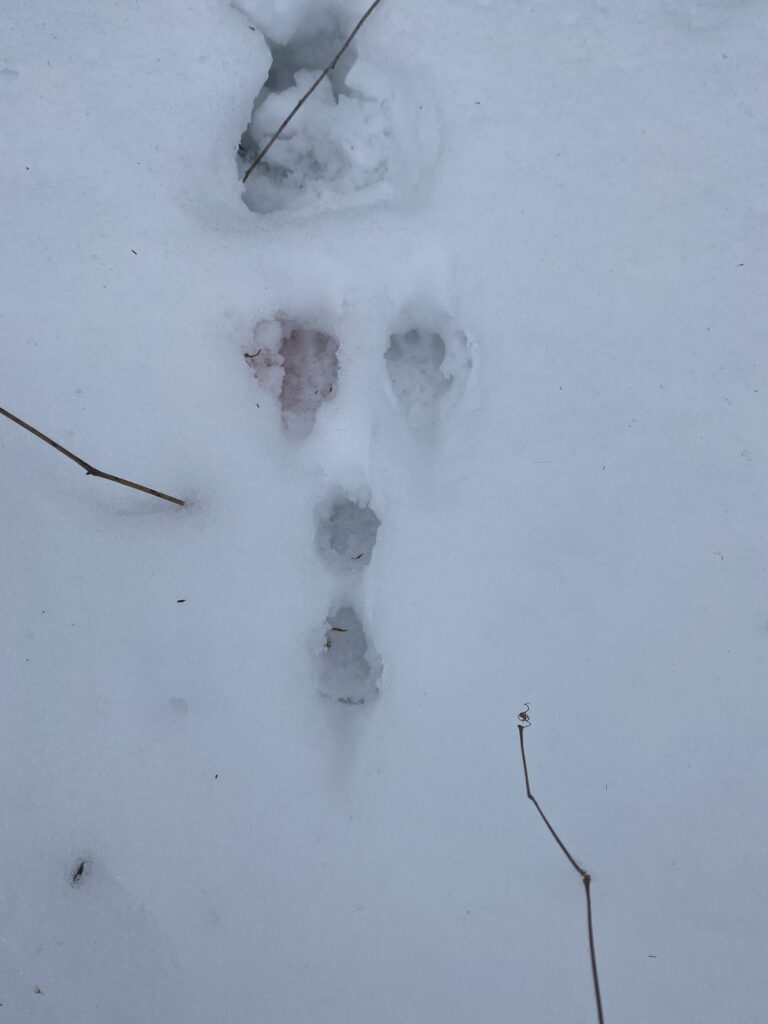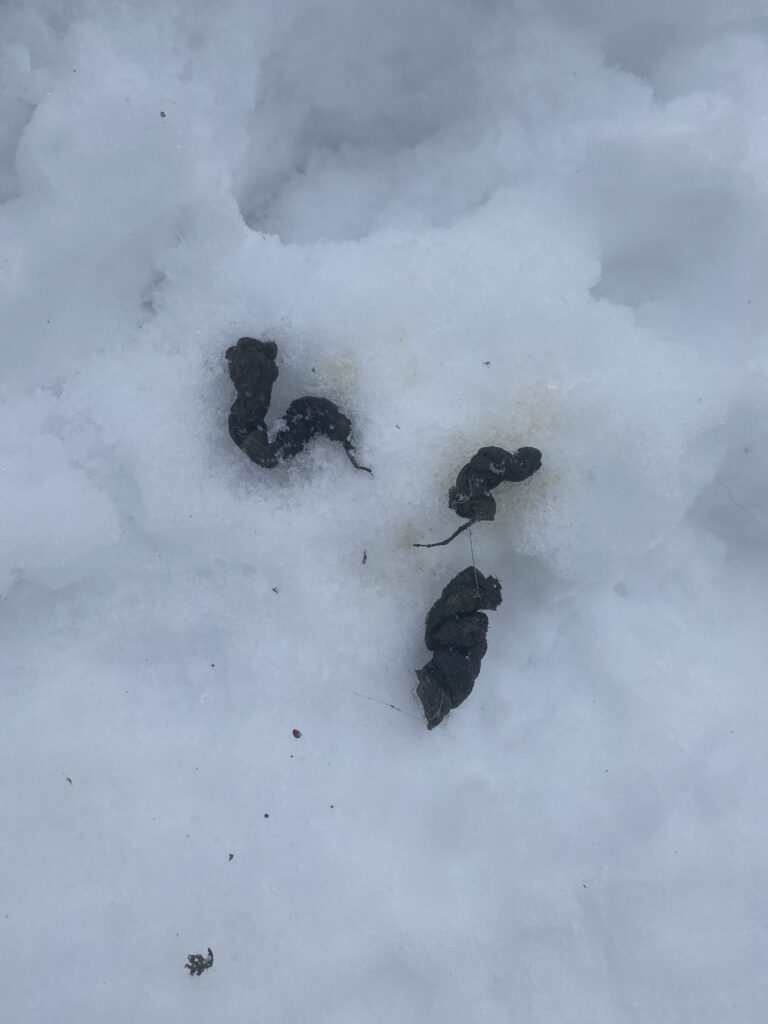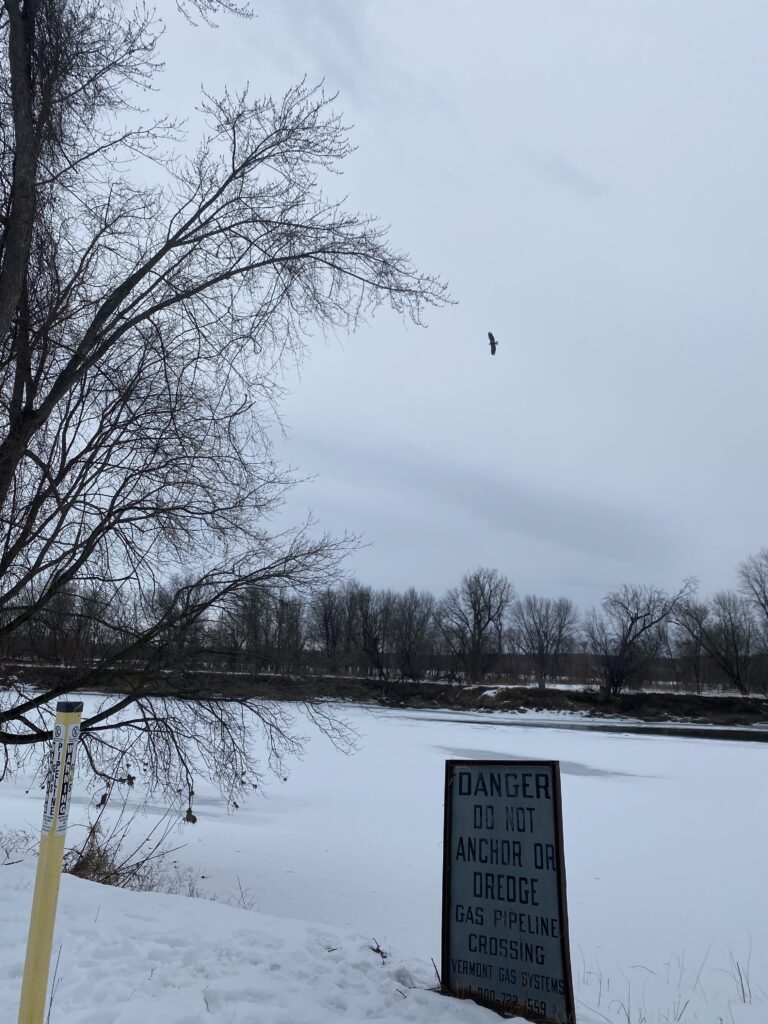I walked back to McKenzie Park on the Rena Calkins trail, alongside the Winooski River, searching for potential signs of wild activity. The first week of the semester was marked by a bundle of snowstorms followed by several days of bone-chilling wind, creating a hard crust over the snow which was covered by uneven patches of light, windswept snow. Not many tracks appeared distinctly, and dogs roamed these woods frequently, though I was still able to make some speculations on wildlife in the area.

This was one of the more distinct, small tracks I found, most likely belonging to a gray squirrel. Tracks like these darted across the trail and into clumps of brush, where the small rodents found shelter or food. They may also have been taking cover from predators, such as foxes or coyotes. I found fecal evidence of these predators along the trail. With the long hairs sticking out from the irregularly-shaped, bulbous pieces of scat, I guessed the animal was either a gray or a red fox.

I walked against gusts of wind, past large, lifeless sticks coming up from the barren crust. The woods felt almost lonely with the lack of leaves on vegetation, and the absence of moving water where the Winooski River was buried under the snow made the place feel dead in some strange way. But certain clues in the snow gave proof of the hard-headed drudgery of life that operates during the bleakness of the cold season. Above me, a bald eagle stretched its wings wide, displaying the piercing beauty of a life dependent on deciphering forms in the snow.
